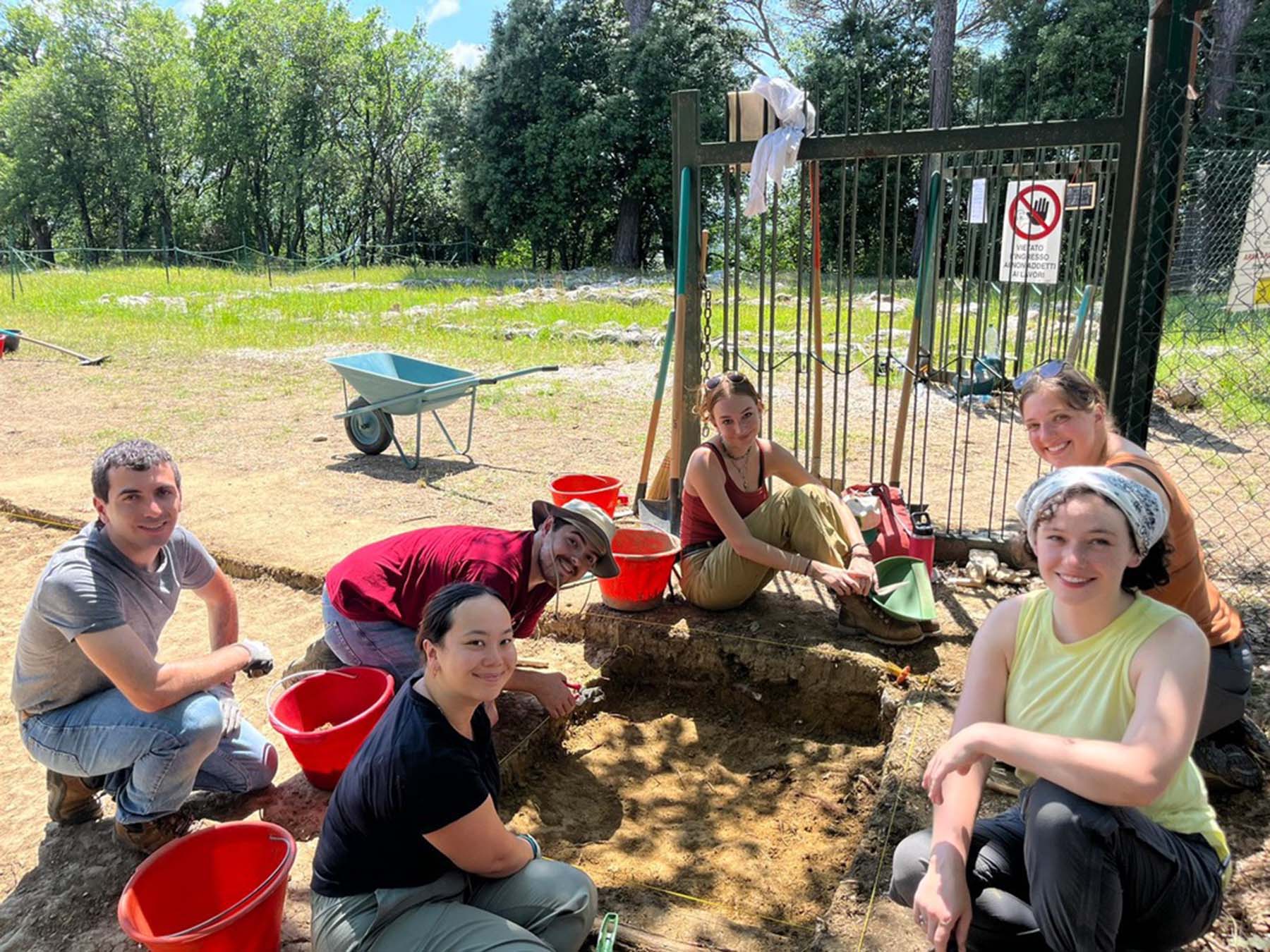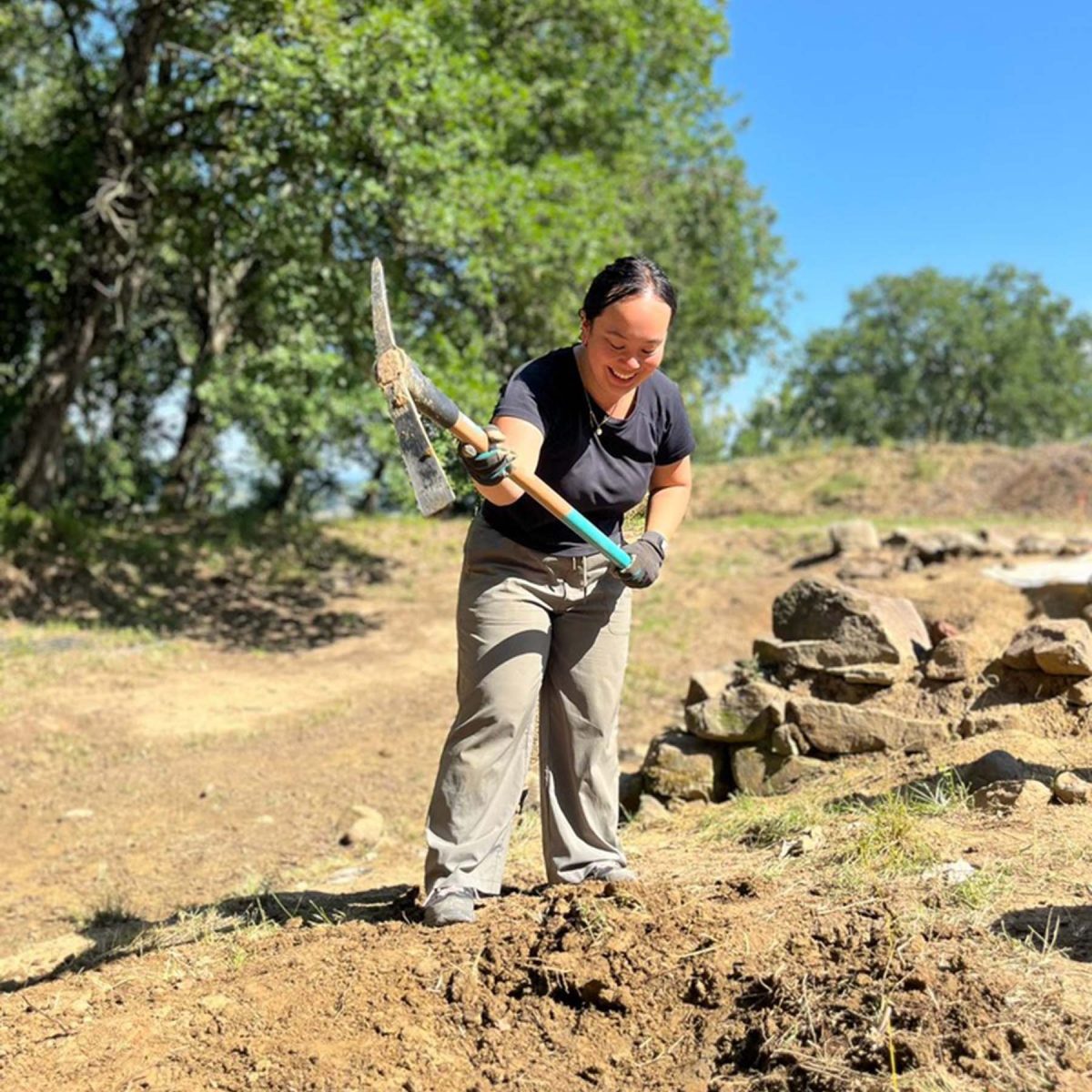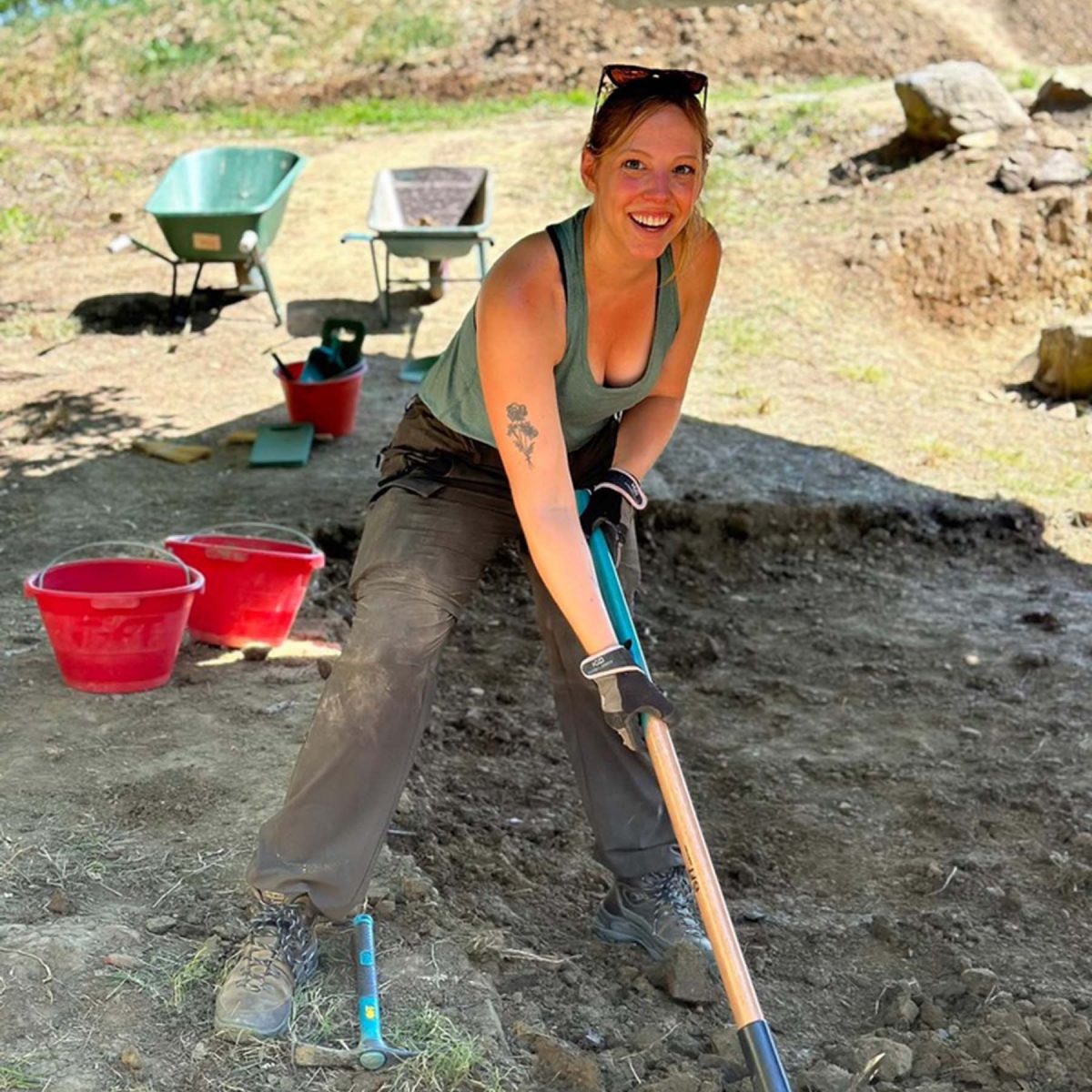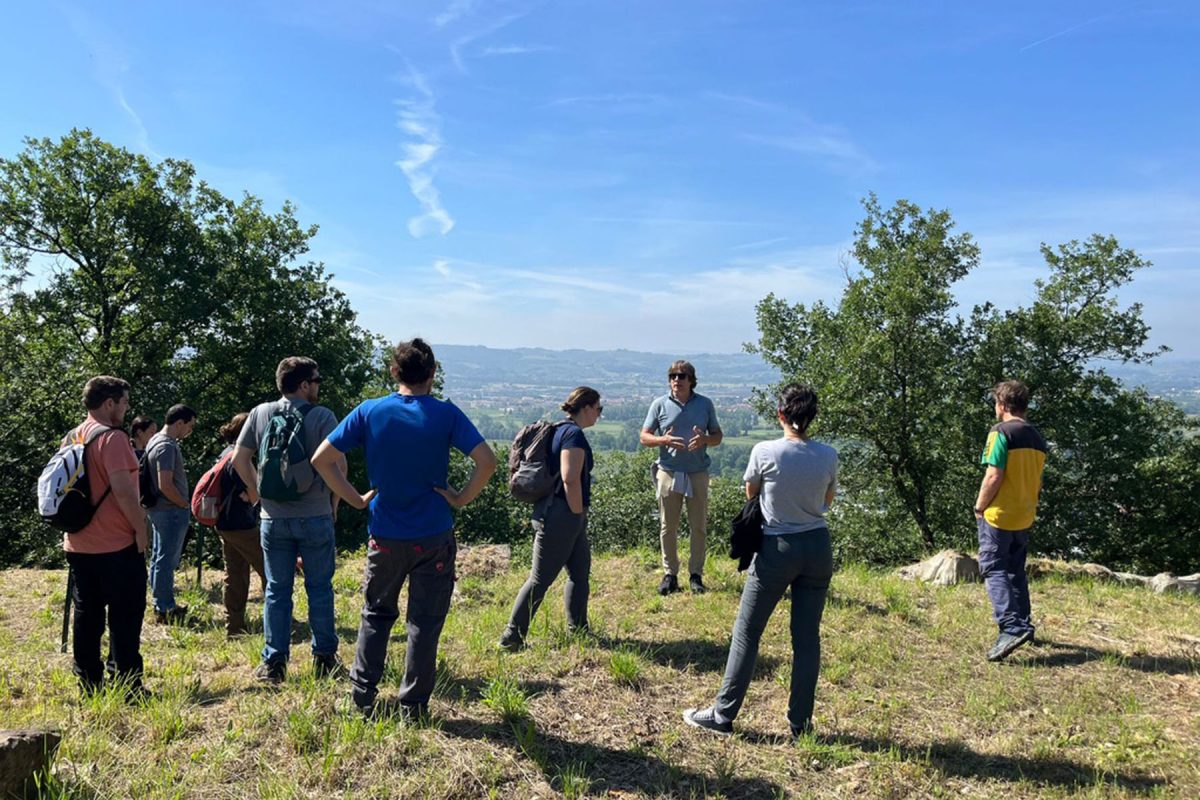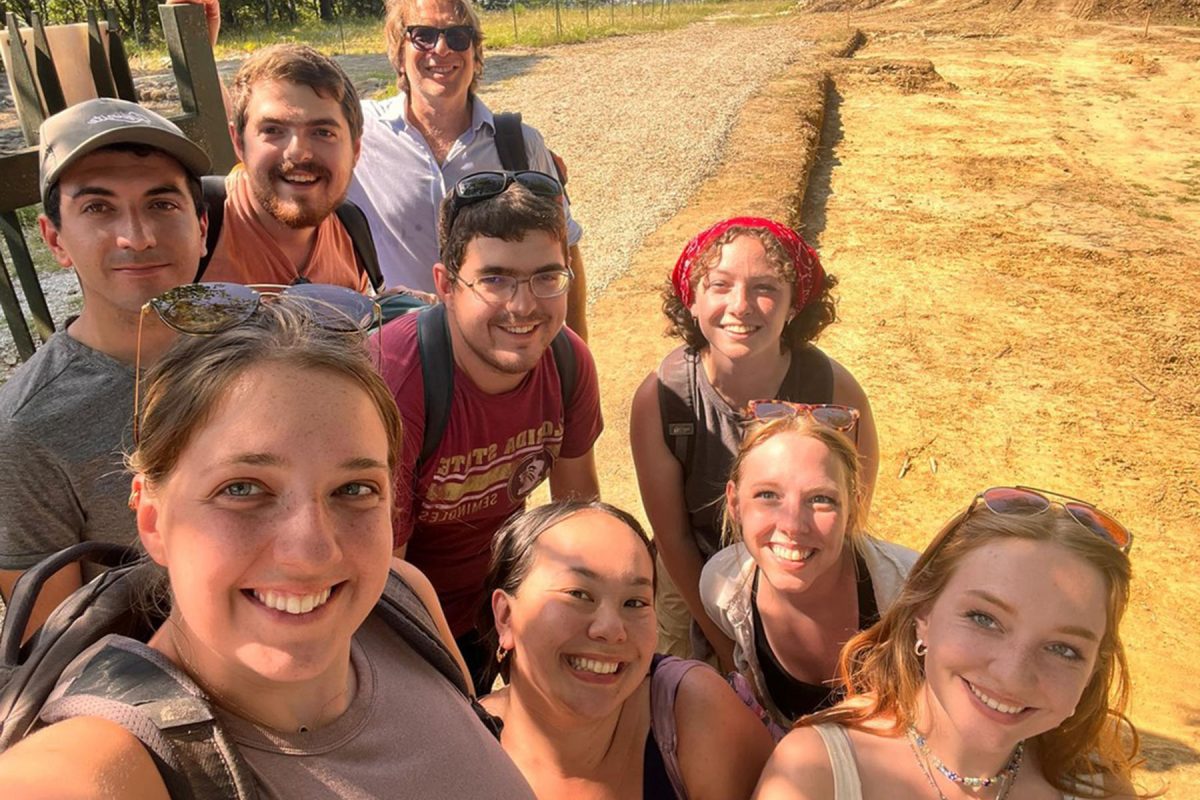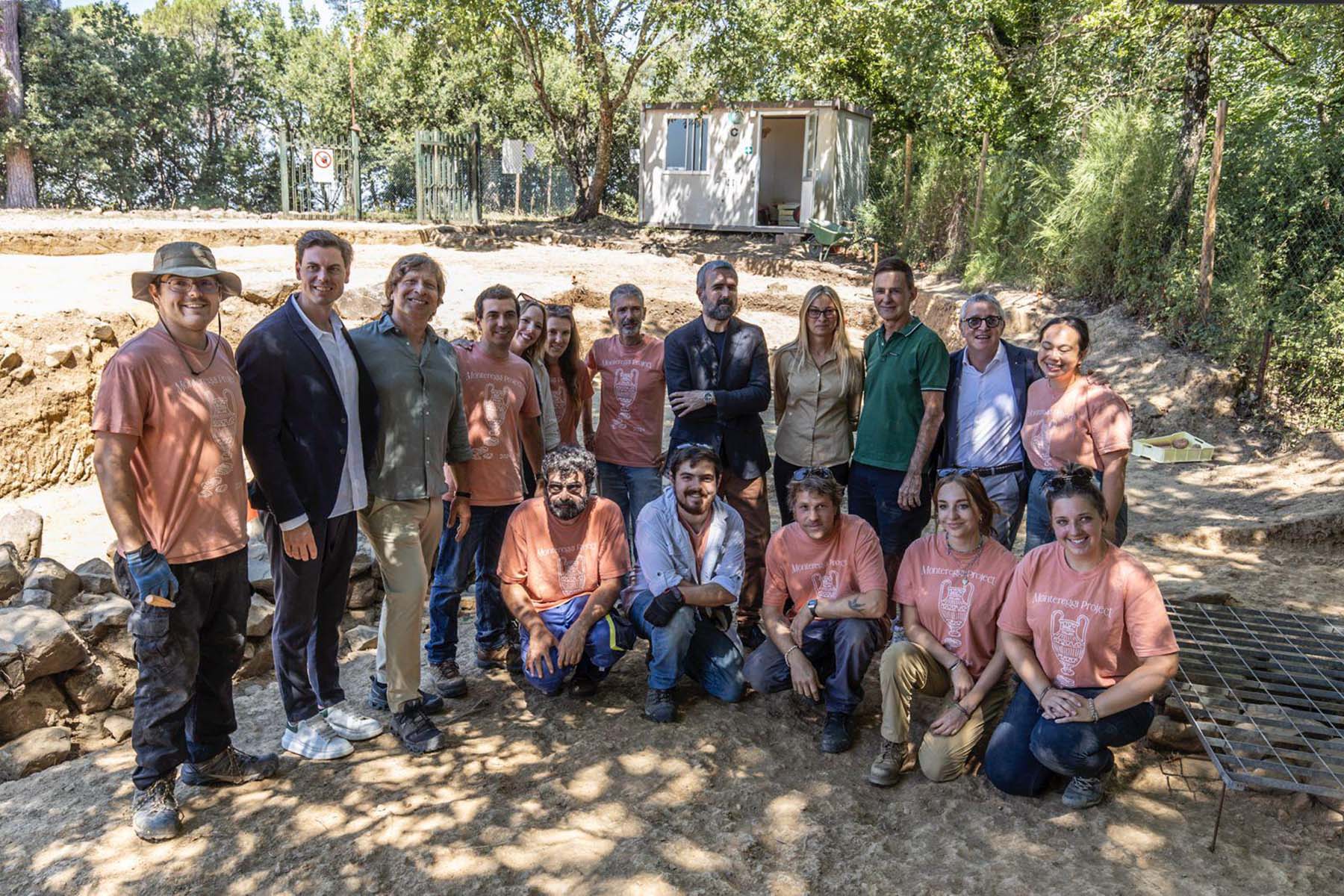
A new archaeological expedition led by a team of Florida State University researchers that began in Italy this summer has captured local excitement as the first discoveries from the excavation are revealed to the public.
The Montereggi Archaeological Project, co-directed by Professor of Classics Andrea De Giorgi, seeks to uncover the history of an ancient Etruscan hilltop settlement that predates settlement by the ancient Romans. The project has received a permit for three years, with the aim of extending the permit and eventually constructing an accompanying museum and research center.
“We hope our investigations help to imbue this ancient site with a sense of life, our goal is to glean the story of this historical setting, then restore the ancient site and present it back to the community.”
— Andrea De Giorgi, professor of Classics
“We hope our investigations help to imbue this ancient site with a sense of life,” De Giorgi said. “Our goal is to glean the story of this historical setting, then restore the ancient site and present it back to the community. We’re very grateful for the support of the property owners (George M. Rapier III and Villa Bibbiani), the township, the mayor and the local people who are all very excited about this project.”
A team of eight FSU classics graduate students began excavating the site in June using a mix of traditional methods, such as shovels and wheelbarrows, alongside advanced technologies such as ground-penetrating radar. The team has already unearthed several discoveries, including Etruscan coins, ceramics, pottery and remnants of a monumental building from the 5th century B.C.
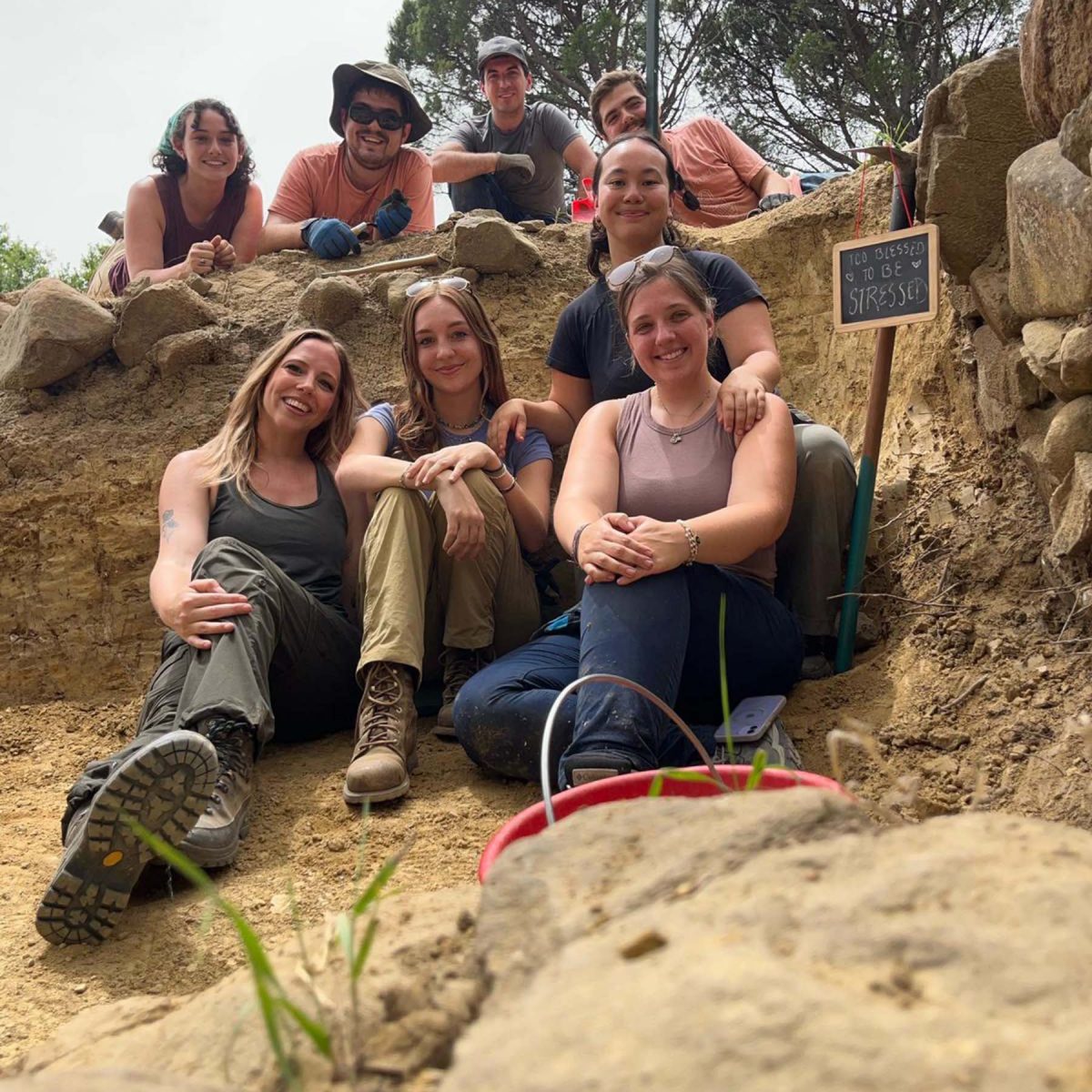
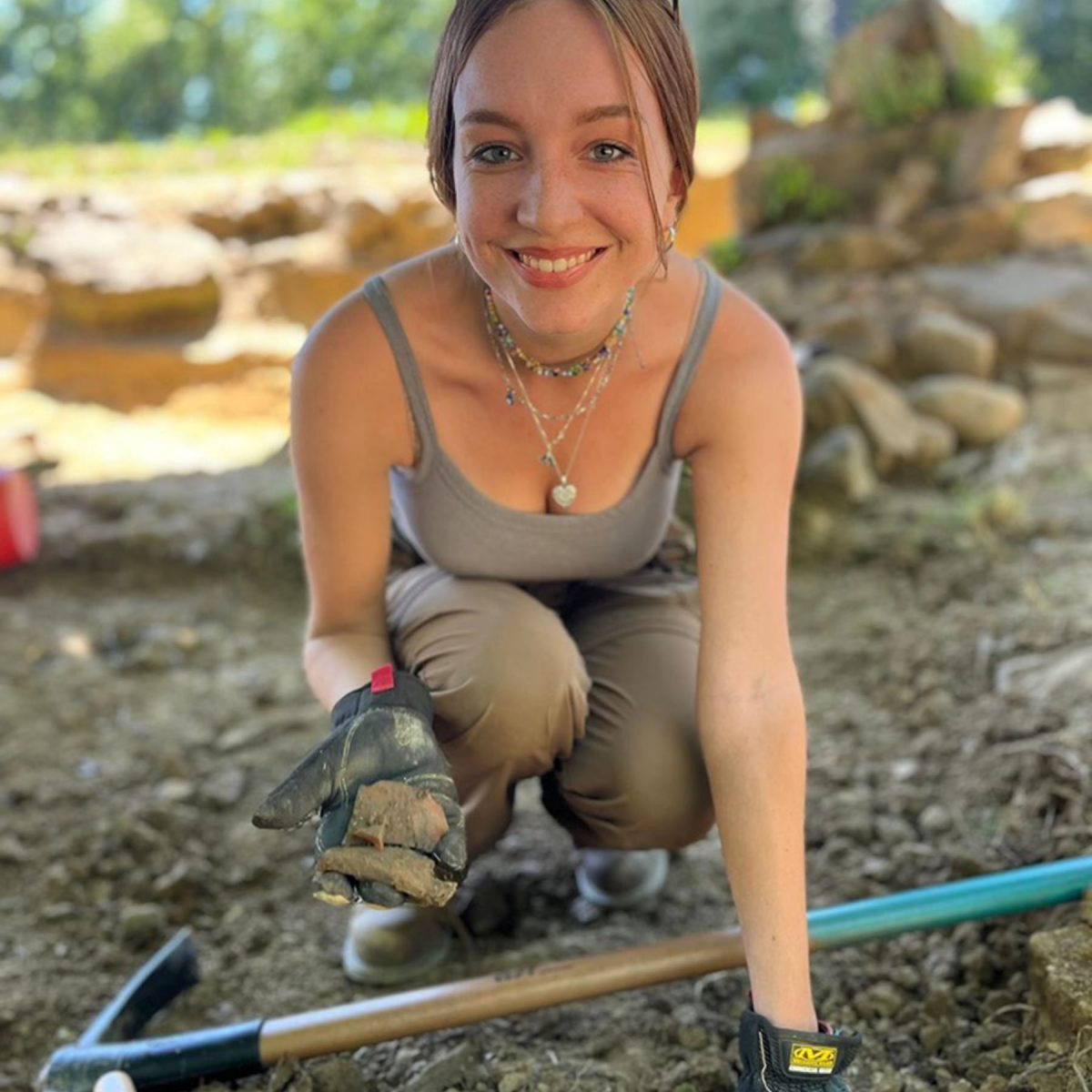
Located 30 minutes southwest of Florence in Tuscany, the hilltop settlement sits along the Arno River near the town of Capraia e Limite. The site’s long history of occupation spans from the Etruscan period in the 5th to 3rd centuries B.C. to the Romans and continues into the late Middle Ages. Research will explore how the site evolved over time, harnessing both historical data and modern technology to investigate the transition from the Etruscan period to the Roman era.
“Montereggi is yet another great opportunity for FSU students to showcase their skills, learn about new field techniques and advance their understanding of ancient cultures using state-of-the-art technology,” De Giorgi said. “This project will give students the opportunity to put their hands on ancient materials, organize collections and help curate an exhibit where our findings will be accessible to the public.”
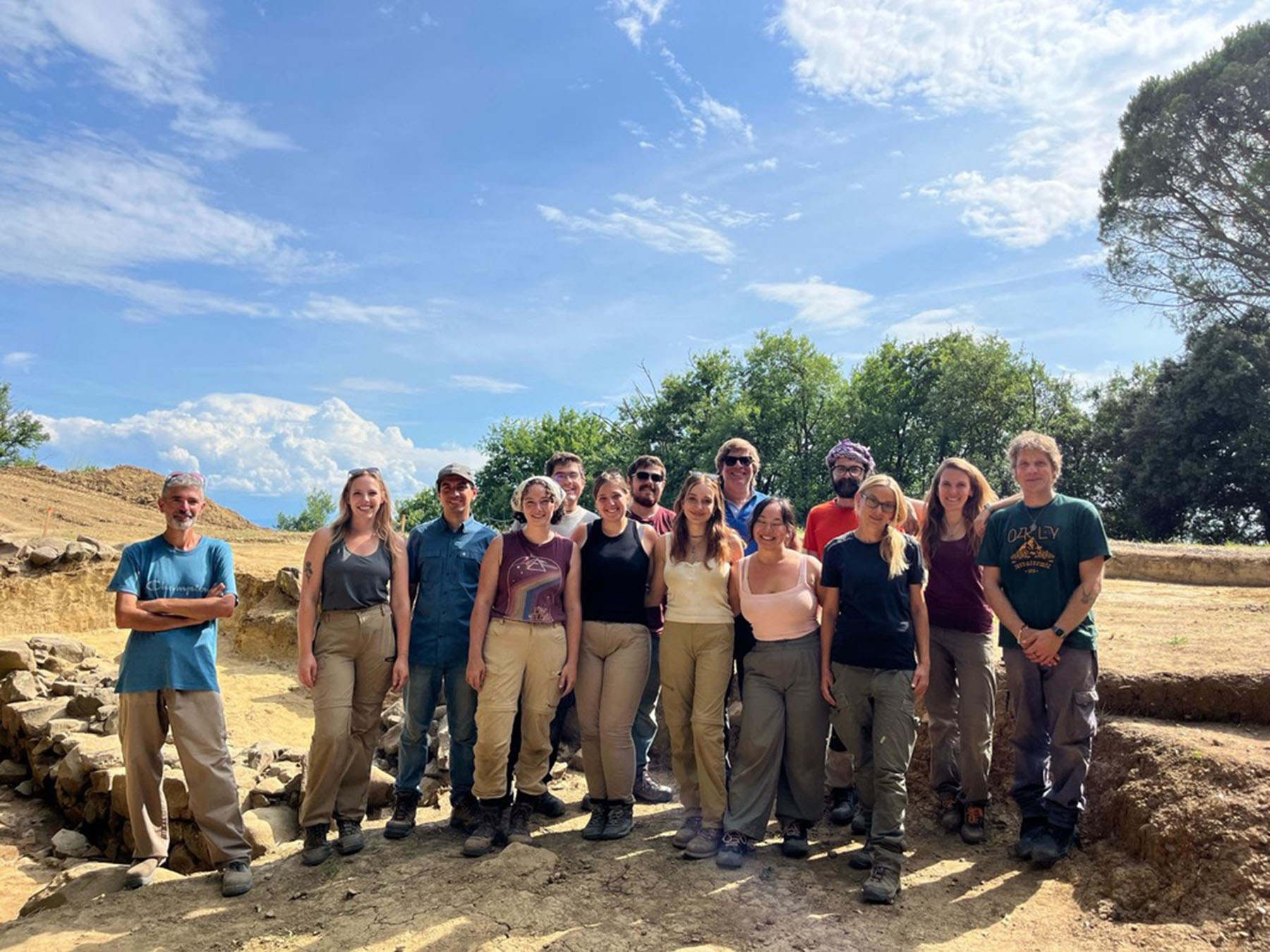
One of the modern techniques employed by the researchers is known as light detection and ranging technology, or LiDAR. This remote sensing method employs laser light to measure distances and create detailed topographic maps and 3D models to detect buildings and architectural structures beneath the soil for excavation.
Dig sites such as Montereggi offer valuable professional experiences for students aiming for careers in academia or museum curation. Hands-on work with archaeological practices and technologies is essential for researchers and leads to opportunities for publications, from doctoral dissertations to journal articles and books. Additionally, future curators gain crucial experience in handling ancient materials and organizing collections for display.
“The Montereggi Archaeological Project builds on our department’s long history of involvement in archaeological projects in Italy,” said Tim Stover, professor and chair of the FSU Department of Classics. “Professor De Giorgi will provide invaluable experiences for our students who will get hands-on training while working at the site. The project enhances the department’s reputation as a leader in the study of the art and archaeology of ancient Italy while opening up a world of exciting possibilities for our students.”
Thanks to a concession from the Italian Ministry of Culture to FSU, and support from private benefactor George McCarroll Rapier III, the Montereggi Archaeological Project will continue year-round through 2026 with the goal of extending the permit length, increasing the number of students working at the dig site and eventually creating a public space at the site by establishing an exhibit on the property. Students departed the site in July and will return in cycles, some in October and some in the spring, and they will work alongside co-director Agnese Pittari of Italy.
This is the third active Italian dig site for the FSU classics department. In 1973, FSU began excavations at Cetamura del Chianti, and in 2013 a dig began at Cosa in Chianti, which De Giorgi has co-directed since its inception.
“The local community quickly adopted our FSU students, some of whom are having their first experience abroad but are becoming integrated into this community in Italy,” De Giorgi said. “I was born and raised in Italy and now live in Tallahassee, so it means the world to me to see our FSU students adapting to the pace and lifestyle of Italy and to be welcomed into the local community.”
To learn more about De Giorgi’s work and research in FSU’s Department of Classics, visit classics.fsu.edu.
